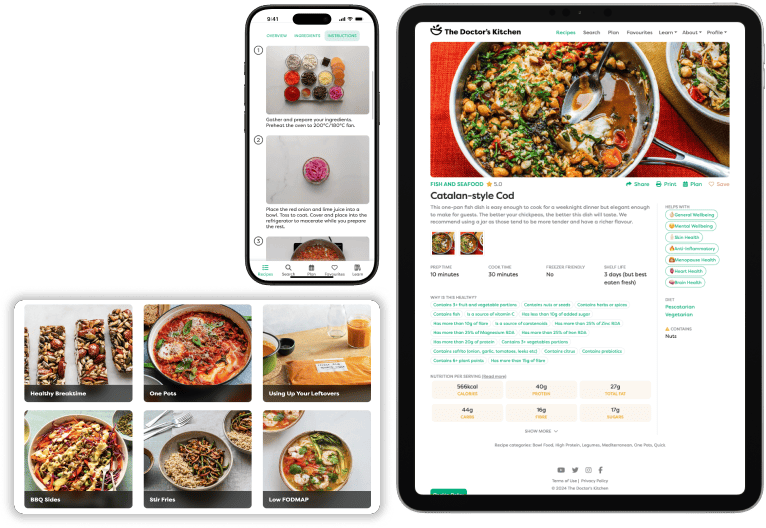Foods for the winter season
26th Jan 2024
In the heart of winter's chill, we're prioritising habits for a healthy cold season. While claims of immunity-boosting superfoods often lack evidence, a balanced diet can have a profound influence on our immune system.
Key points
In a Nutshell
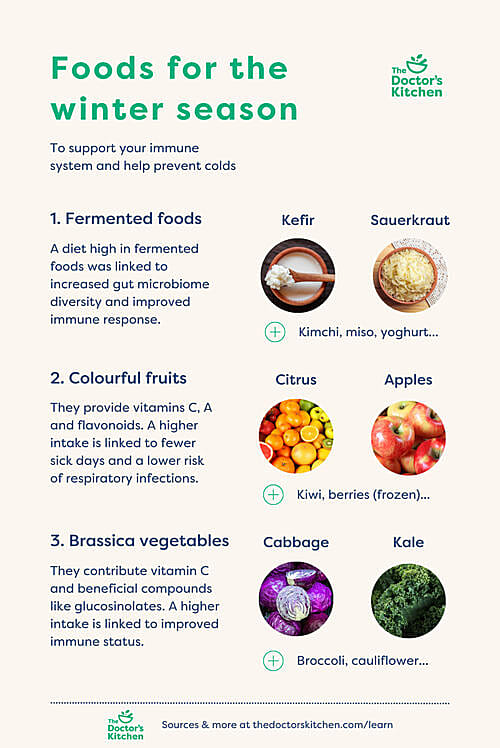
Save it or download it here.
1. Fermented foods
Kefir, kraut, kimchi, miso, yoghurt and apple cider vinegar
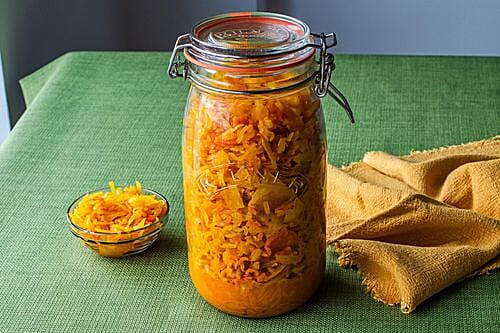
Why? A diet high in fermented foods was shown to increase the diversity of people’s gut microbes and improve their immune responses.
How much? Any amount, but make it regular. In the study, participants were given 6 servings a day, each 1/4 cup. But, the beneficial effects were more strongly correlated with time. So, opt for regular, smaller servings over large amounts once in a while, especially if you’re new to fermented foods.
2. Brassica vegetables
Broccoli, cauliflower, kale, cabbage and Brussels sprouts
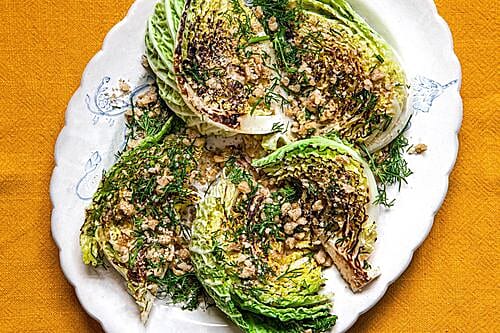
Why? A higher intake was linked to decreased inflammatory markers, suggesting improved immune status. An animal study published in Nature also found that molecules in Brassica veg could help ease lung infection.
How much? The study found benefits for around 80g per day – roughly one portion. That’s about 8 broccoli/cauliflower florets or 4 heaped tablespoons of cooked cabbage/kale.
3. Colourful fruits
Citrus, kiwi, berries and apples
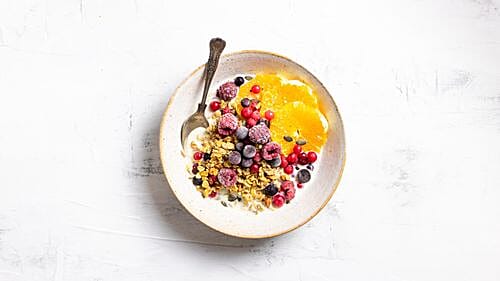
Why? They provide vitamins and polyphenols that support our immune function, including vitamin C and flavonoids. Human studies found that flavonoid supplementation reduced the occurrence of respiratory tract infections and the number of sick days.
How much? Flavonoid supplementation ranged from 0.2 to 1.2 g/d. To get around 1 gram per day, add one to two portions of flavonoid-rich foods to your day – such as 1-2 oranges, a cup of green tea, 2-3 kiwi or 2-3 handfuls of berries (frozen if it’s not berry season).
In daily life
Our favourite ways to eat more immune-supportive foods
- Probiotic breakfast: Add kimchi or other fermented vegetables to your scrambled eggs or omelettes. If you don’t make your own kimchi, check the label to make sure it contains live bacteria or look for “raw and unpasteurised” to get the full probiotic benefits.
- Extra greens: Throw broccoli or kale into pasta sauces and stews.
- Go-to snack or dessert: Toss together oranges, kiwi, apples or frozen berries with kefir or plain yoghurt. When shopping, look for labels that advertise “live cultures” or list specific bacteria as ingredients.
Recipes
- Gochujang Noodle Jar with Pak Choy and Edamame
- Kimchi & Aubergine Shakshuka (In the app)
- Orange, Pomegranate, Radicchio, Chicory, Mint and Pistachio Salad (In the app)
Key papers
Fermented foods: Wastyk et al. Cell. 2021
Flavonoids: Somerville et al. Adv Nutr. 2016
Cruciferous veg: Jiang et al. Journal of the Academy of Nutrition and Dietetics. 2014
- Access over 800 research backed recipes
- Personalise food for your unique health needs
